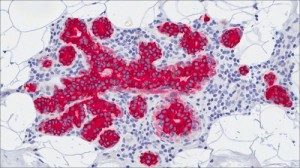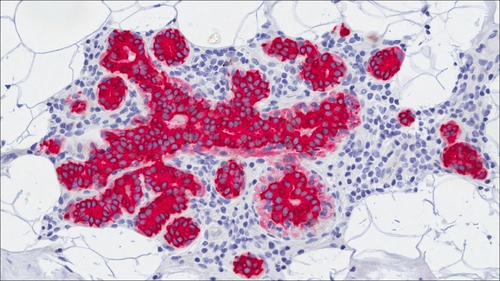 Intensity Modulated Radiation Therapy (IMRT) is a precise technique of external beam radiation that uses computer-generated images of the tumor to determine the size, shape, and location of the area that needs treatment. Helical tomotherapy is a type of IMRT where the radiation aimed at the tumor forms a spiral pattern, while the patient lays on a table that is moved through a machine.
Intensity Modulated Radiation Therapy (IMRT) is a precise technique of external beam radiation that uses computer-generated images of the tumor to determine the size, shape, and location of the area that needs treatment. Helical tomotherapy is a type of IMRT where the radiation aimed at the tumor forms a spiral pattern, while the patient lays on a table that is moved through a machine.
During IMRT-HT treatments, thousands of thin radiation beams that can be programmed to different intensities and angles are aimed at the tumor, and because the radiation is so precisely controlled, IMRT-HT can spare nearby healthy tissues, resulting in fewer side effects than normal external beam radiation. However, associated late-toxicity side effects still exist that can have a big impact on the patients’ life quality and ultimately become a determinant of the amount of maximum radiation emitted towards the tumor, affecting its growth.
In line with this concern, a team of researchers designed a clinical study set to evaluate the acute and moderately-late cardiac and lung toxicities of IMRT-HT for locoregional breast radiation treatment, including the internal mammary nodes, in 30 patients with stage III breast cancers receiving adjuvant chemotherapy, during a non-interrupted radiation period of 5 weeks.
The planning target volumes (PTV) included breast/chest wall, axillary level II, III, infra/supraclavicular and internal mammary nodes clinical target volumes (CTV) plus 3 mm margins, with dose to PTV of 50 Gy in 25 fractions. Acute toxicities were analyzed every week and 2 weeks post treatment using the Common Terminology Criteria for Adverse Events (CTCAV) v3.0.scale, with the heart and lungs being defined as critical organs.
The moderately-late toxicities were assessed clinically and by cardiac myoview perfusion tests preformed at baseline, 3 and 12-month follow-up. Additionally, a chest computed tomography (CT) scan was also preformed at 6-month follow-up.
[adrotate group=”1″]
The researchers observed that in the median follow-up of 58 months, moderately-late side effects were not very frequent. Relatively low skin erythema was observed, mainly grade 1-2 between the 3rd and the 5th week of radiation treatment. Only 4 patients experienced grade 3 skin reactions, mostly seen 2 weeks post radiation, and only 5 patients developed grade 1 or 2 dyspnea, although 3 of them already had symptoms pre-radiation treatment.
Furthermore, cardiac myoview tests done at baseline and 1-year follow-up for 15 out of 18 left sided breast cancers did not show any radiation-related abnormalities.
The 6-month follow-up chest CT-scans preformed in 25 patients revealed minimal anterior lung fibrosis in 7 patients and were completely normal for the other 18. No locoregional recurrence was recorded, and the 5-year survival was an encouraging 78%.
The results of this clinical trial are important for radiation physicians and promising for breast cancer patients that undergo this treatment. Because IMRT-HT for locoregional breast radiation is very well tolerated with no treatment-related cardiac or respiratory symptoms, it can be used to control tumor growth and eventually help tumor regression with only minimal acute or moderately-late side effects.


